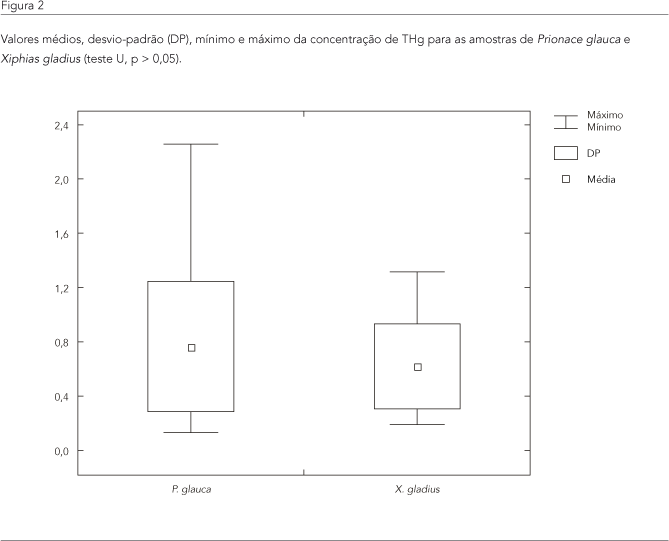Total mercury (THg) was analyzed in muscle tissue from the blue shark Prionace glauca and the swordfish Xiphias gladius, obtained from the South and Southeast coast of Brazil, to verify compliance with current limits for human consumption. Samples were obtained through the REVIZEE Program and a commercial fishery in Itajaí, Santa Catarina State. A total of 95 specimens were analyzed (48 X. gladius and 47 P. glauca), and correlations were checked between THg and fish length and weight. THg ranged from 0.13 to 2.26µgg-1 (fresh weight), and there was no significant difference between the means for P. glauca, 0.76 ± 0.48µgg-1 (f.w.) and X. gladius, 0.62 ± 0.31 (Mann-Whitney test, p < 0.05). In 16% of samples, THg was above the limits set by the National Health Surveillance Agency (ANVISA), namely 1µgg-1, and 62% exceeded the World Health Organization (WHO) limit of 0.5µgg-1. The ingestion of 100g/ day-1 of P. glauca or X. gladius would result in a daily THg intake of more than twice the WHO (1990) suggested limit.
Mercury; Environmental Pollution; Fishes




